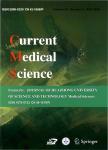The Mechanical Study of Vascular Endothelial Growth Factor on the Prevention of Restenosis after Angioplasty
The Mechanical Study of Vascular Endothelial Growth Factor on the Prevention of Restenosis after Angioplasty作者机构:Department of Internal Medicine Tongji Hospital Tongji Medical College Huazhong University of Science and Technology Wuhan 430030
出 版 物:《Journal of Huazhong University of Science and Technology(Medical Sciences)》 (华中科技大学学报(医学英德文版))
年 卷 期:2001年第21卷第3期
页 面:195-197页
核心收录:
学科分类:1002[医学-临床医学] 100201[医学-内科学(含:心血管病、血液病、呼吸系病、消化系病、内分泌与代谢病、肾病、风湿病、传染病)] 10[医学]
主 题:vascular endothelial growth factor adenovirus gene therapy vascular endothelial cell restenosis
摘 要:The mechanism of vascular endothelial growth factor (VEGF) on the prevention of restenosis after angioplasty was investigated. The cultured vascular endothelial cells (VEC) were incubated with the conditioned medium (CM) from vascular smooth muscle cells (VSMC) infected with recombinant adenoviruses containing the hVEGF 165 gene. To observe the effects of VEGF on proliferation and NO, ET, 6-keto-PGF1α secretion of VEC, WST-1 method, Griess method and radioimmunoassay were used respectively. The PDGF-B mRNA transcription in VECs was detected by RT-PCR. It was showed that NO, 6-keto-PGF1α and OD value were markedly increased in a dose-dependent manner in the VEGF-treated groups as compared with those in the control group, while ET and PDGF-B mRNA were significantly decreased in the VEGF-treated groups (P0.05 or P0.01). Adenovirus vector mediated hVEGF 165 gene could promote the proliferation of VECs and improve NO, PGI 2 secretion, inhibit ET secretion and PDGF-B mRNA transcription in the VECs. The above results offered further theoretical evidence for VEGF on the prevention of restenosis after angioplasty.



